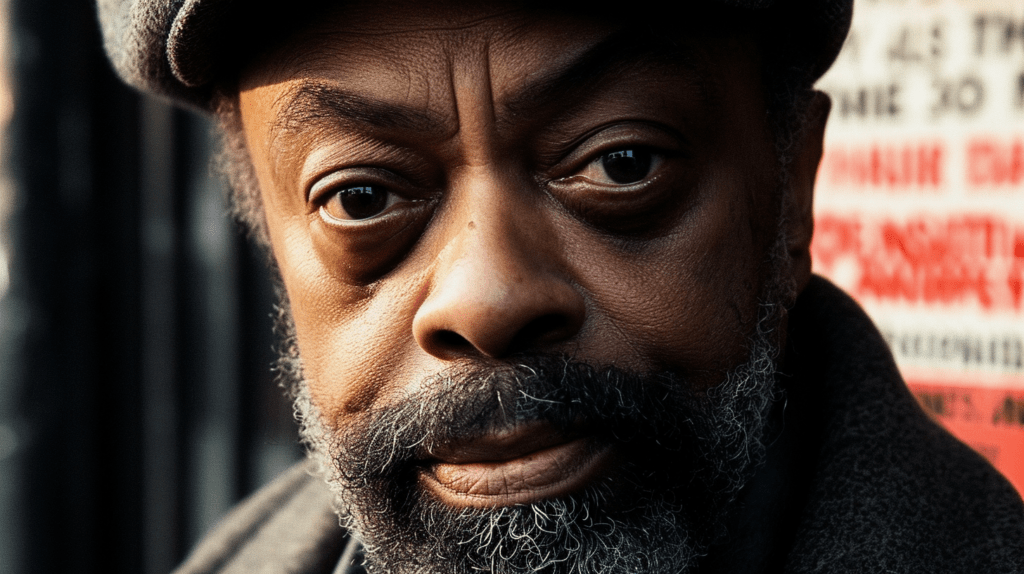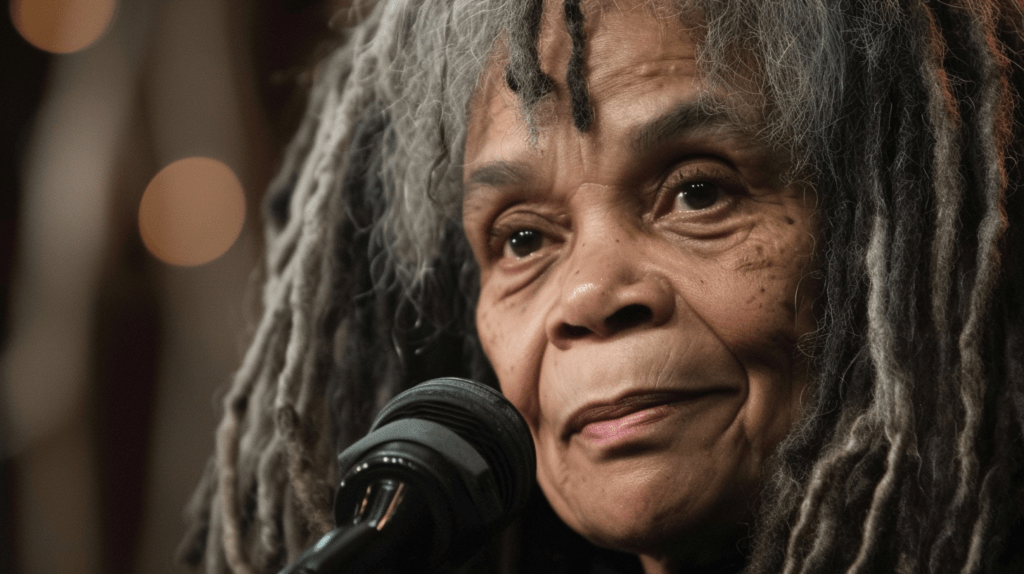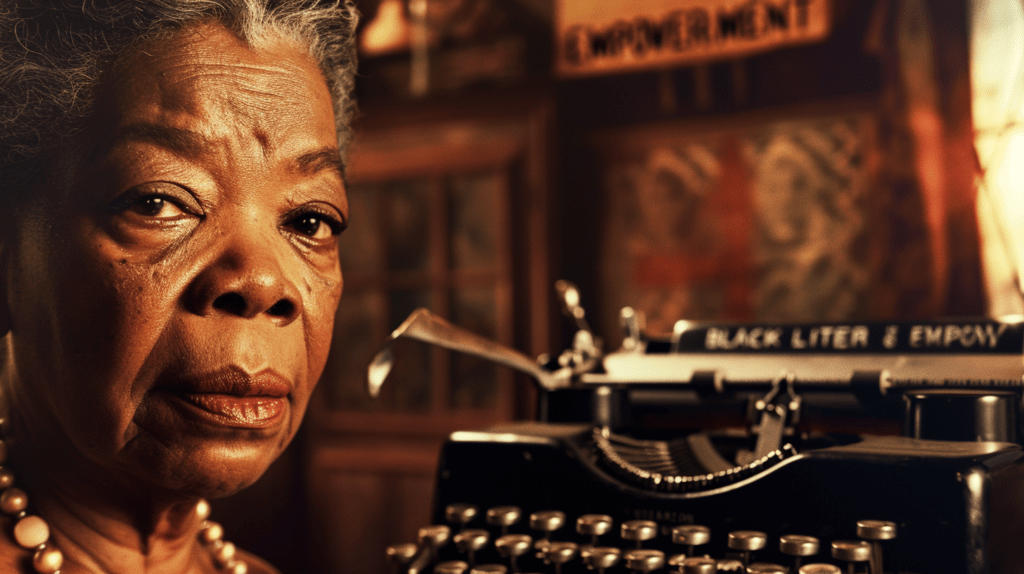An in-depth exploration of the Black Arts Movement, its ties to the Civil Rights era, and its profound impact on African American culture and politics.
By Darius Spearman (africanelements)
About the author: Darius Spearman is a professor of Black Studies at San Diego City College, where he has been pursuing his love of teaching since 2007. He is the author of several books, including Between The Color Lines: A History of African Americans on the California Frontier Through 1890. You can visit Darius online at africanelements.org
Key Takeaways
- The Black Arts Movement: A pivotal cultural movement that redefined African American identity and artistic expression.
- Historical Context: Rooted in the 1960s Civil Rights and Black Power movements, fostering a unique artistic and political voice.
- Key Figures: Icons like Amiri Baraka, Sonia Sanchez, and Maya Angelou, who shaped the movement’s narrative and reach.
- Artistic Expressions: Encompassing literature, visual arts, and theater, the movement created a lasting legacy in African American culture.
Introduction

The Black Arts Movement, emerged during the tumultuous 1960s and 1970s in the United States. It stands as a pivotal chapter in African American cultural history. In this exploration, we delve into the movement’s origins, the profound influence of its key figures, and the diverse tapestry of artistic expressions it birthed. This journey through history unveils the movement’s significance in redefining African American identity and forging a unique artistic and political voice.
Historical Context
The Black Arts Movement emerged in response to the 1960s Civil Rights Movement and was closely aligned with the Black Power Movement. It represented a radical departure from previous African American cultural expressions. The movement sought to create a unique and empowering voice for Black Americans.
Race-related uprisings and the growing demand for racial justice in major US cities catalyzed the Black Arts Movement. Forsgren highlights the influence of these events on the movement’s dramatists, noting,
“The 1960s and ’70s witnessed hundreds of race-related uprisings across major US cities…These rebellions galvanized a generation of activists—including Black Arts Movement dramatists Amiri Baraka, Sonia Sanchez, Lola E. Jones, and Carol Freeman” (Forsgren 2022).
Key Figures and Contributors To The Black Arts Movement
The contributions of several key figures brought their unique voice and perspective to the movement. Their contributions defined the Black Arts Movement. Amiri Baraka, a central figure in the movement, used his writings and plays to address issues of race, class, and social justice. His work was influential in shaping the movement’s political and artistic direction.
Sonia Sanchez’s poetry and plays were instrumental in articulating the struggles and aspirations of the Black community during this period. Her work emphasized the importance of cultural pride and identity in the fight for racial equality.
Maya Angelou’s contributions transcended literary boundaries. Her writing offers poignant insights into the African American experience. Angelou’s work remains a testament to the resilience and creativity of the Black community. The movement also saw significant contributions from a variety of artists, writers, and activists, each playing a crucial role in its development and legacy.
Amiri Baraka: The Prophetic Voice of the Black Arts Movement

Amiri Baraka, born LeRoi Jones, was a central figure in the Black Arts Movement. Baraka used his writings and plays to powerfully address issues of race, class, and social justice. His influential work was pivotal in shaping both the political and artistic direction of the movement.
Baraka’s journey was marked by a relentless pursuit of truth through art, making him a defining voice of his generation. Born in 1934, Baraka’s early work was influenced by the Beat poets. However, the Civil Rights Movement catalyzed a significant shift in his focus towards African American culture and politics.
Baraka’s “Dutchman” and Its Impact on the Black Arts Movement
One of Baraka’s most famous plays, “Dutchman,” is often regarded as a seminal work in African American theater. A study by Hajir Nasir Turki and Hamdi H. Al-Douri explores its Brechtian influences, noting:
“Baraka’s Dutchman illustrates the Brechtian upshots on the Afro-American stage…The journey of Clay and Lula is pointed to be a lesson for the spectators and the readers in employing several Brechtian elements and techniques to expose the current issues of the 1960s of American life” (Turki and Al-Douri, 2022).
Table: Key Works of Amiri Baraka
| Year | Title | Work Type |
|---|---|---|
| 1964 | Dutchman | Play |
| 1969 | Black Magic | Poetry |
| 1984 | The Autobiography of LeRoi Jones | Autobiography |
Influence on the Black Arts Movement
Baraka’s role extended beyond his literary achievements. He was instrumental in establishing the Black Arts Repertory Theatre/School in Harlem, which became a focal point for African American artistic expression.
Baraka’s Contributions to the Black Arts Movement
- Literary Works: Challenged societal norms and advocated for social change.
- Theatrical Influence: Redefined African American theater with groundbreaking plays.
- Cultural Leadership: Fostering a space for Black artists to collaborate and create.
Legacy and Continuing Relevance
Amiri Baraka’s legacy in the realms of literature and social activism remains influential. His works continue to be studied and celebrated for their raw honesty and powerful commentary on societal issues. Baraka’s life and work encapsulate the spirit of the Black Arts Movement. His unwavering commitment to social justice and the empowerment of the African American community continues to inspire generations.
Sonia Sanchez: A Lyrical Force in the Black Arts Movement

Sonia Sanchez, an influential figure in the Black Arts Movement, used her evocative poetry and plays to articulate the struggles and aspirations of the Black community. Her work resonated deeply, emphasizing the importance of cultural pride and identity in the broader fight for racial equality. Sanchez’s journey as a poet and playwright was intertwined with her roles as a teacher and activist, influencing generations.
Sanchez, born in 1934 in Birmingham, Alabama, the early Civil Rights Movement impacted her significantly. Her exposure to the struggles of African Americans deeply impacted her writing. A strong emphasis on rhythm and vernacular marked Sanchez’s work during the Black Arts Movement. Equally prominent was her heavy thematic use of racial pride and empowerment.
Major Themes in Sanchez’s Work
- Racial Identity: Exploring the complexities of being Black in America.
- Feminism: Addressing issues of gender and equality.
- Political Activism: Advocating for civil rights and social justice.
Sanchez’s poetry collection “Homegirls and Handgrenades” (1984) is a seminal work. The collection showcases her powerful use of language and her commitment to social and racial issues.
Sonia Sanchez’s Notable Works
| Year | Title |
|---|---|
| 1969 | “Homecoming” |
| 1984 | “Homegirls and Handgrenades” |
| 1998 | “Like the Singing Coming off the Drums” |
Impact and Legacy
Sanchez’s contributions to the Black Arts Movement and American literature are profound. Her works not only reflected the cultural and political ethos of the time but also helped shape the discourse on race, gender, and class. Sanchez remains a towering figure in American literature. Her works serves as a testament to the power of the written word in the struggle for racial and social justice. Her legacy continues to inspire new generations of writers and activists.
Maya Angelou: A Literary Icon of the Black Arts Movement

Maya Angelou’s contributions to the Black Arts Movement and American literature transcend mere words. Her powerful insights into the African American experience and her portrayal of resilience and creativity have left an indelible mark on literature and civil rights advocacy. Angelou’s body of work, characterized by its emotional depth and cultural significance, continues to inspire and influence.
Early Struggles and Triumphs
Angelou’s early life was marked by racial discrimination and personal trauma. These experiences informed much of her later work, giving voice to the struggles and triumphs of the African American community.
Angelou’s writing, particularly her autobiographical works, speaks not just to the African American experience but to the universal human condition. Her series of autobiographies, including “All God’s Children Need Traveling Shoes,” reflects her journey of self-discovery and empowerment.
Key Publications by Maya Angelou
| Year | Title |
|---|---|
| 1969 | I Know Why the Caged Bird Sings |
| 1986 | All God’s Children Need Traveling Shoes |
Angelou’s contributions extended beyond literature. Her public advocacy for civil rights and her participation in significant cultural moments, like her reading at President Bill Clinton’s inauguration, demonstrate her broader impact on American society.
“On the Pulse of Morning”
Angelou’s presentation of the poem, “On the Pulse of Morning,” at President Clinton’s inauguration, was a moment of significant cultural importance. It symbolized a new dawn for America, embracing themes of unity, resilience, and hope.
Maya Angelou’s Impact on the Black Arts Movement
- Literary Contributions: Her works provided a profound insight into the struggles and achievements of African Americans.
- Advocacy for Equality: Angelou’s public life was a testament to her commitment to civil rights and social justice.
- Inspirational Legacy: Her writings continue to inspire and empower, resonating with readers across generations.
The Universal Appeal of Angelou’s Work
Maya Angelou’s work transcends time and cultural boundaries. Her ability to connect with readers on a deeply personal level has made her one of the most beloved and respected figures in American literature. Angelou’s profound contributions to the Black Arts Movement and American literature have firmly established her as an iconic figure. Her legacy of resilience, creativity, and advocacy continues to inspire and challenge us.
Artistic Expressions Of The Black Arts Movement: Literature, Art, And Theater
The Black Arts Movement was a dynamic force that manifested across various artistic forms, deeply impacting African American cultural expression. The multifaceted movement encompassed literature, visual arts, and theater. The movement included the works of influential figures such as Amiri Baraka, Maya Angelou, Sonia Sanchez, Betye Saar, and Faith Ringgold. These artists used their talents not only to confront and dismantle stereotypes but also to illuminate the rich tapestry of African American life, history, and culture. Through their creative endeavors, they left an indelible mark on the struggle for racial justice, capturing the essence of a turbulent period in American history.
Influential Literary Works of the Black Arts Movement
| Author | Notable Work |
|---|---|
| Amiri Baraka | “Dutchman” |
| Maya Angelou | “I Know Why the Caged Bird Sings” |
| Sonia Sanchez | “Homegirls and Handgrenades” |
The visual arts aspect of the Black Arts Movement included a range of expressions, from murals that adorned city walls to intimate studio paintings. These works often conveyed powerful messages about racial pride, resistance, and community solidarity. Artists like Betye Saar and Faith Ringgold used their art to tell stories of the African American experience, blending historical context with contemporary concerns (Blum 2021).
“The vast majority of these artworks reflected strong visual statements against racism and positive statements about African American life, history, and culture” (Blum 2021).
Theater and performance arts were also a vital component of the Black Arts Movement. Playwrights like Amiri Baraka and Sonia Sanchez brought the complexities of Black life to the stage. Their work offered audiences a window into the lived experiences of African Americans. These performances were often characterized by their raw, unfiltered portrayals of social realities, challenging audiences to confront and acknowledge systemic racial issues.
Themes and Motifs Of The Black Arts Movement

The Black Arts Movement was rich in themes and motifs that resonated deeply within the African American community. A central theme of the movement was the exploration and celebration of Black identity. This was a direct response to the historical marginalization and misrepresentation of African Americans in mainstream culture. Through art, literature, and performance, the movement sought to reclaim and redefine what it meant to be Black in America.
Another prominent theme was social justice and activism. Many artists and writers of the Black Arts Movement used their work as a platform to address issues of racial inequality and to advocate for civil rights and social change. This blending of art and activism was a defining characteristic of the movement. The theme of racial justice has its roots in the broader Civil Rights and Black Power movements of the time.
The movement also emphasized the importance of cultural heritage. Many artists explored their African roots and incorporating elements of African culture into their work. This focus on heritage was part of a larger effort to create a distinct Black aesthetic and to foster a sense of pride and unity within the African American community.
Influence of the Black Arts Movement on Music and Performing Arts

Music, particularly jazz and soul, was an integral part of the Black Arts Movement, providing both inspiration and a soundtrack for the era. Jazz and soul music were popular during this time. Additionally, the music deeply connected to the themes of the movement. Artists like Nina Simone and John Coltrane used their music to express the complexities of Black life. They infused their compositions with themes of liberation, struggle, and hope.
Influential Jazz and Soul Artists of the Black Arts Movement
| Artist | Genre |
|---|---|
| Nina Simone | Soul/Jazz |
| John Coltrane | Jazz |
Dance and Spoken Word
Dance and spoken word were also significant aspects of the movement. These forms of expression allowed for a more direct, visceral engagement with audiences. Through movement and prose, artists addressed social and political issues in a powerful and evocative manner. The combination of movement, rhythm, and words in these performances created a unique and impactful mode of artistic expression that was emblematic of the Black Arts Movement.
In the crucible of the Black Arts Movement, literature, visual arts, and theater became potent instruments of change and self-expression. Writers like Amiri Baraka, Maya Angelou, and Sonia Sanchez wove narratives that resonated with the African American spirit, challenging prevailing norms and advocating for racial equality. In the world of visual arts, Betye Saar and Faith Ringgold infused their creations with historical depth and contemporary relevance, forging a visual language of resistance and pride. The theater and performance arts, through the raw portrayals of Amiri Baraka and Sonia Sanchez, forced audiences to confront the stark realities of systemic racism. During this pivotal moment in history, we recognize that the creative endeavors of these artists shaped the Black Arts Movement. More so, they continue to reverberate, inspiring generations to come in the ongoing pursuit of justice and equality.
Criticism and Controversy

The Black Arts Movement, while rich in artistic innovation and cultural empowerment, also faced its share of criticism and controversy. The movement was not without its detractors and internal debates, particularly around issues of gender and political ideology. Critics argued that while the movement sought to uplift Black voices, it sometimes perpetuated patriarchal values. The emphasis on black manhood often sidelined the contributions and experiences of Black women. This gender dynamic within the movement sparked significant debate and prompted a reevaluation of the roles and representation of women in Black art and activism.
A specific example of the patriarchal tendencies within the Black Arts Movement can be seen in the criticism of some of its leading figures and their works. Amiri Baraka, a central figure in the movement, often faced criticism for the portrayal of women in his works, which some critics and scholars perceived as reflecting patriarchal and misogynistic attitudes.

Baraka’s play “The Dutchman,” for instance, is often cited as an example. The play, which is a powerful commentary on race relations, also includes depictions of women that some argue reinforce stereotypical and negative views (Traylor 1983). The character of Lula, a white woman who interacts with the main character, Clay, a black man, is portrayed in a manner that some critics interpret as a reflection of misogynistic attitudes.
This criticism is part of a broader dialogue about the gender dynamics within the Black Arts Movement, where the contributions of women were sometimes overshadowed by their male counterparts, and the portrayal of women in some of the movement’s works did not always align with the broader goals of racial and social justice.
For a detailed exploration of this aspect, refer to the academic work of scholars like Eleanor Traylor, who has written extensively on the Black Arts Movement and its complexities, including the issue of gender representation (Traylor 1983). Additionally, Sherley Anne Williams’ work “Give Birth to Brightness: A Thematic Study in Neo-Black Literature” (1972) provides critical insights into the gender dynamics of the Black Arts Movement and serves as an example of the scholarly discourse on the topic.
Key Criticisms of the Black Arts Movement
| Criticism | Description |
|---|---|
| Gender Representation | Alleged perpetuation of patriarchal values |
| Political Ideology | Debates over the movement’s political alignment |
Furthermore, the movement’s strong emphasis on Black nationalism and its occasional foray into militant rhetoric drew criticism from both within and outside the African American community, leading to complex discussions about the role of art in social and political activism.
Legacy and Influence
The Black Arts Movement left an indelible mark on American culture, influencing subsequent generations of artists and activists. Its legacy is particularly evident in the ways it reshaped conversations about race and artistic expression in America. The movement’s emphasis on Black pride, cultural heritage, and political activism laid the groundwork for contemporary movements like Black Lives Matter. Forsgren draws a direct line from the Black Arts Movement to contemporary activism, stating,
“Recovering these less-studied works reveals not only how the Black Arts Movement was not so uniformly masculinist as it has sometimes been depicted, but also how these early womanist interventions laid a critical foundation for the Black Lives Matter movement of today” (Forsgren 2022).
The Black And The Harlem Renaissance: A Comparative Analysis
When comparing the Black Arts Movement to other cultural movements like the Harlem Renaissance, distinct differences in approach, tone, and objectives become apparent. Unlike the Harlem Renaissance, which often sought to gain acceptance and validation from white audiences, the Black Arts Movement was unapologetically centered on Black audiences and Black experiences. This shift represented a significant evolution in the way African American artists approached their work and their audience.
Comparative Analysis: Black Arts Movement vs. Harlem Renaissance
| Feature | Black Arts Movement | Harlem Renaissance |
|---|---|---|
| Audience Focus | Primarily Black audiences | Broader, including white |
| Artistic Approach | Politically charged | More integrationist |
| Cultural Impact | Paved way for modern movements | Influenced future Black artists |
Conclusion: The Black Arts Movement And Its Place In History

The Black Arts Movement was a seminal period in African American history, characterized by a profound reimagining of Black identity, art, and politics. It provided a platform for Black artists to express their experiences and challenge societal norms, leaving a legacy that continues to influence contemporary art and activism. As we reflect on this movement, we recognize its complexities, its contributions, and its enduring impact on American culture.
The legacy of the Black Arts Movement reverberates through time, leaving an indelible mark on African American culture, literature, and politics. Rooted in the crucible of the 1960s Civil Rights and Black Power movements, this cultural renaissance ushered in a new era of self-expression and empowerment. Figures like Amiri Baraka, Sonia Sanchez, and Maya Angelou breathed life into its narrative, while literature, visual arts, theater, and music served as the canvases upon which this powerful movement painted its story. Beyond its historical confines, the Black Arts Movement continues to inspire, its resonance felt in contemporary artistic and social justice movements, underscoring its enduring relevance and profound impact on the journey of African Americans in the United States.
FAQ
Q: What was the Black Arts Movement?
A: The Black Arts Movement was an African American cultural movement that emerged in the 1960s and 70s, focusing on the creation of Black-centered art and literature.
Q: Who were some key figures of the Black Arts Movement?
A: Key figures included Amiri Baraka, Sonia Sanchez, Maya Angelou, and others who used their work to explore and celebrate Black identity and culture.
Q: How did the Black Arts Movement influence music?
A: The movement had a significant impact on music, especially jazz and soul, with artists like Nina Simone and John Coltrane infusing their work with themes of Black empowerment and resistance.
Works Cited
Blum, P. “The Black Arts Movement.” 2021.
Forsgren, L. L. “Hands Up, Don’t Shoot: “Suicide,” Black Gun Ownership, and Restoring Black Masculinity on Black Arts Movement Stages.” 2022.
Traylor, Eleanor. “The Black Arts Movement: A Literary Overview.” The Black Scholar, vol. 14, no. 1, 1983, pp. 2-10.
Turki, Hajir Nasir, and Hamdi H. Al-Douri. “Tracing The Brechtian Influence in Amiri Baraka’s Dutchman.” Journal of Language Studies, vol. 5, no. 1, 2022. Link
Williams, Sherley Anne. “Give Birth to Brightness: A Thematic Study in Neo-Black Literature.” 1972.
